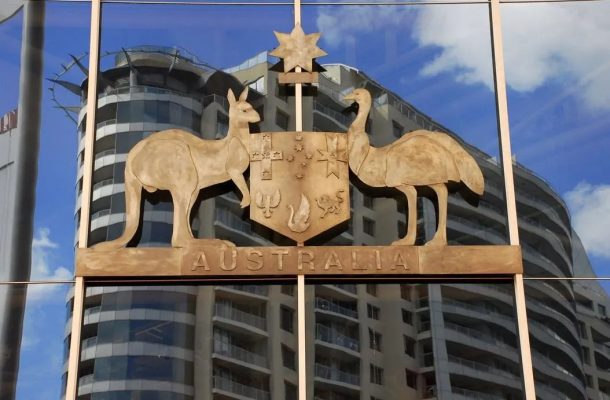After a catastrophic summer of bushfires, earlier this year the Commonwealth government established the Royal Commission into National Natural Disaster Arrangements. It’s due to report in the coming weeks. Expectations are high that its findings will lead to better management of future catastrophic events.
Australians place great faith in royal commissions as entities that can influence future policy directions for the better. At present, the Royal Commission into Violence, Abuse, Neglect and Exploitation of People with Disability, and the Royal Commission into Aged Care Quality and Safety are also underway at the Commonwealth level. And at the state level in Victoria, the Royal Commission into the Management of Police Informants and the Royal Commission into Victoria’s Mental Health System are also operating.
Since the Australian Royal Commissions Act of 1902, royal commissions have been set up for a plethora of reasons. They can provide domain-specific policy advice, investigate specific scandals or crises, or assure the public that a government is taking a particular issue seriously. The enormity of the upheavals caused by COVID-19 will likely raise pressure for a number of future royal commissions.
These entities go to great lengths to understand major events and challenges, and to avoid repeating mistakes of the past. But royal commissions sometimes miss opportunities for policy influence, and they’ve been subject to criticisms. They’re said to be expensive, time-consuming, inherently political and, most damningly, ineffective.

So, when and how do royal commissions successfully wield policy influence? And what actions can commissioners take to raise the likelihood that their policy recommendations will lead to policy change?
In a recent study published in the Australian Journal of Public Administration, we analysed the actions of three landmark royal commissions that left legacies of significant policy change. We found they deployed three key strategies:
- Narrative framing
- Novel activation of advocacy coalitions
- Careful construction of implementable recommendations.
Narrative framing
Problems invariably come with multiple attributes. How they are framed – or what aspects are highlighted in policy discussions – can determine who will pay attention to them. Effective problem framing can assist the development of broader narratives around what happened in the past, and what actions should be taken to change future outcomes.
Informed by a series of sustained public protests led by Indigenous Australians, the Aboriginal Land Rights Commission (ALRC) was established by the Whitlam government in 1973, headed by Edward Woodward (later Sir Edward Woodward). In the final report, Woodward framed the discussion around land rights by emphasising ideas about “justice” and “facts”. Placing his recommendations within this context, Woodward presented them as the natural progression of an earlier commitment that needed to be honoured, rather than a radical break from existing policy.
Based on the recommendations from the ALRC report, the first national land rights legislation was introduced to the Federal Parliament in October 1975. The Fraser government subsequently introduced the Aboriginal Land Rights (NT) Bill 1976. Key elements of the bill reflected the royal commission’s recommendations. Woodward’s narrative framing helped to ensure his recommendations would meet support that transcended the partisan political fault lines of 1970s Australia.
Novel activation of advocacy coalitions
Although members of royal commissions cannot be expected to establish coalitions of people interested in their investigations, they face many opportunities to engage with stakeholders, advocates and policymakers in ways that build on the strengths of already-existing coalitions.
An example is provided by the 2009 Victorian Bushfires Royal Commission (VBRC). The VBRC embedded grassroots society in its inquiry, keeping the affected communities and broader public engaged and involved.
Throughout the inquiry, hearings were live-streamed and open to the public, and the media were given extensive access. As well as encouraging involvement throughout the inquiry process, the VBRC developed its recommendations to reflect the theme of ongoing shared responsibility and collective memory.
Outlining the different roles community members, politicians and institutions played provided a clear picture of the web of responsibility. An understanding also emerged that advocacy coalitions are held together by many things that go beyond material interests, including strong emotions. The government of Victoria accepted all but one of the recommendations of the VBRC, and committed more than $900 million to implement them.
Looking ahead to implementation
Policy change requires the existence of policy solutions that are operationally feasible and politically acceptable. The decision to establish the Royal Commission into Institutional Responses to Child Sexual Abuse (RCIRCSA) came after years of sustained campaigning led by victims, support groups and journalists. Delivered at the end of 2016, the final report made 409 recommendations that were not exclusively directed at the Commonwealth or state governments. They were also made for institutions such as churches, schools, local governments, and the criminal justice system.
The successful implementation of many of the commission’s recommendations, so far, has resulted from the commissioners’ careful planning and their efforts to cement the balance between providing recommendations that were functional, but also politically expedient.
The commission’s final report called for ongoing periodic reporting and other oversight mechanisms to overcome the lack of formal power royal commissions have to implement their recommendations or monitor implementation. In addition, it established an open process of inquiry that raised and sustained public awareness and interest in its work. This has made it more difficult for institutions and governments to ignore its recommendations.
The future of royal commissions
Royal commissions have unparalleled capacity to assemble evidence and chart pathways towards achieving valued outcomes for society.
It’s no wonder great expectations often surround their creation. We have shown in our study how classic influence strategies can raise the odds that royal commissions will deliver on those expectations, prompting policy changes of great social value.
This article was published by Michael Mintrom, a Professor of Public Policy and the Inaugural Director of Better Governance and Policy at Monash University and Deirdre O’Neill, an Associate Professor in the Monash School of Social Sciences. It was published by Lens.













